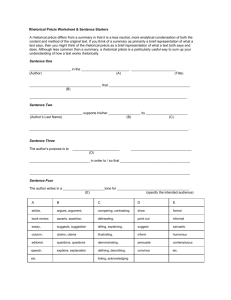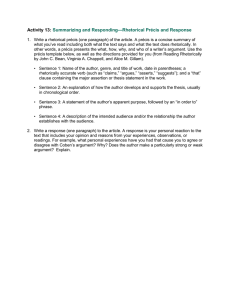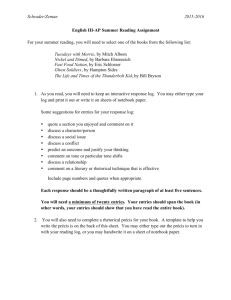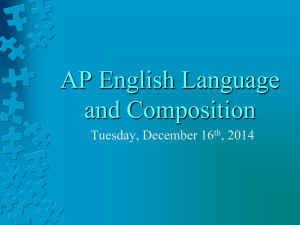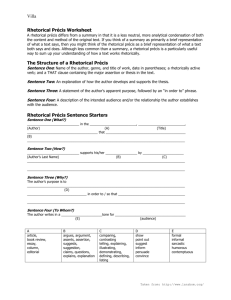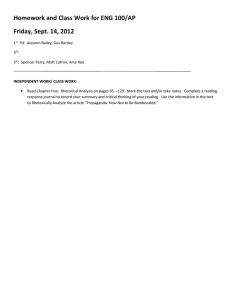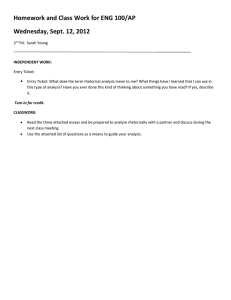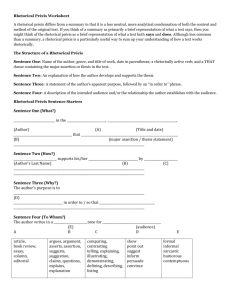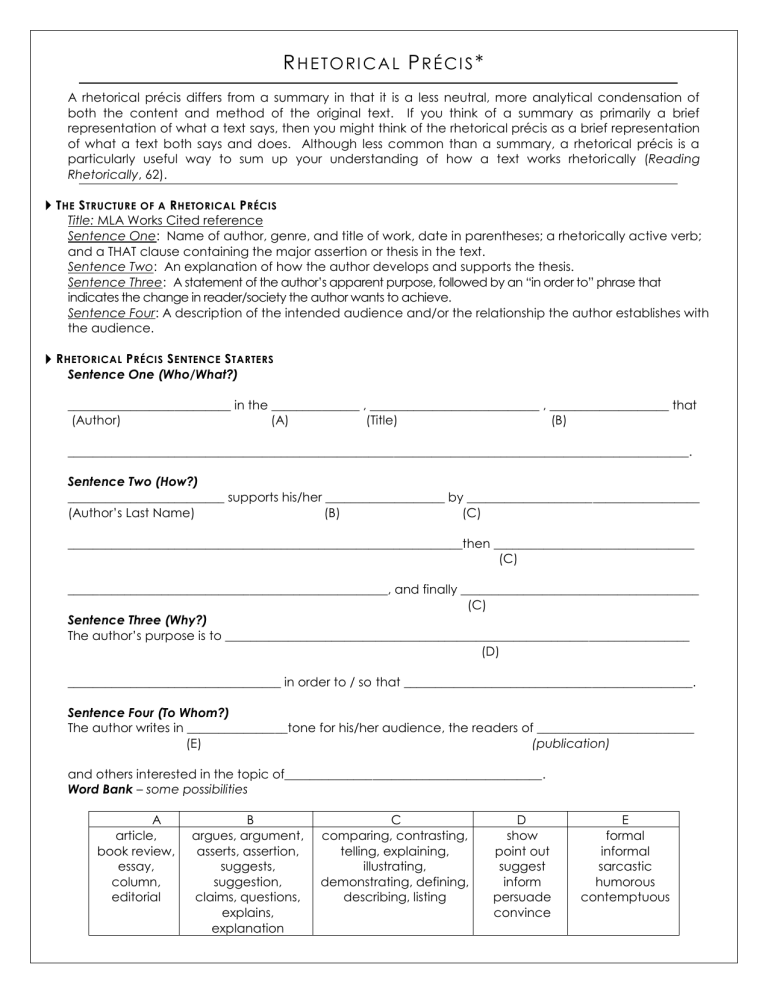
RHETORI CAL PRÉCI S* A rhetorical précis differs from a summary in that it is a less neutral, more analytical condensation of both the content and method of the original text. If you think of a summary as primarily a brief representation of what a text says, then you might think of the rhetorical précis as a brief representation of what a text both says and does. Although less common than a summary, a rhetorical précis is a particularly useful way to sum up your understanding of how a text works rhetorically (Reading Rhetorically, 62). T HE S TRUCTURE OF A R HETORICAL P RÉCIS Title: MLA Works Cited reference Sentence One: Name of author, genre, and title of work, date in parentheses; a rhetorically active verb; and a THAT clause containing the major assertion or thesis in the text. Sentence Two: An explanation of how the author develops and supports the thesis. Sentence Three: A statement of the author’s apparent purpose, followed by an “in order to” phrase that indicates the change in reader/society the author wants to achieve. Sentence Four: A description of the intended audience and/or the relationship the author establishes with the audience. R HETORICAL P RÉCIS S ENTENCE S TARTERS Sentence One (Who/What?) __________________________ in the ______________ , ___________________________ , ___________________ that (Author) (A) (Title) (B) ___________________________________________________________________________________________________. Sentence Two (How?) _________________________ supports his/her ___________________ by _____________________________________ (Author’s Last Name) (B) (C) _______________________________________________________________then ________________________________ (C) ___________________________________________________, and finally ______________________________________ (C) Sentence Three (Why?) The author’s purpose is to __________________________________________________________________________ (D) __________________________________ in order to / so that ______________________________________________. Sentence Four (To Whom?) The author writes in ________________tone for his/her audience, the readers of _________________________ (E) (publication) and others interested in the topic of_________________________________________. Word Bank – some possibilities A article, book review, essay, column, editorial B argues, argument, asserts, assertion, suggests, suggestion, claims, questions, explains, explanation C comparing, contrasting, telling, explaining, illustrating, demonstrating, defining, describing, listing D show point out suggest inform persuade convince E formal informal sarcastic humorous contemptuous What this might look like: Wallace, David Foster. “This is Water.” The Best American Nonrequired Reading 2006. Eds. Dave Eggers, Art Spiegelman, and Matt Groening. Boston: Mariner Books, 2006. 355-364. David Foster Wallace, in a commencement speech, “This is Water,” suggests that a liberal arts education gives students the tools to choose what to think about, and therefore, choose how they experience their adult lives. Foster Wallace supports his argument by reflecting on his own life after his graduation, then illustrates how the mind is “an excellent servant but a terrible master” (9) through the use of several hypothetical examples that demonstrate what he calls our selfish default setting, and finally describes how we can each choose not to operate on our default setting and therefore experience the “real freedom of an education” (14) that involves “attention and awareness and discipline, and being able truly to care about other people and to sacrifice for them over and over in myriad petty, unsexy ways every day” (14). The author’s purpose is to convince his listeners that their education has given them the power to focus their attention in order to make their adult lives meaningful. Foster Wallace speaks in a self-deprecating tone for his audience, the graduating students of Kenyon College, and others interested in the topic of the worth of a liberal arts education or what it truly means to know “how to think” (3). *Note in this example the parenthetical references refer to paragraph numbers, not page numbers.
